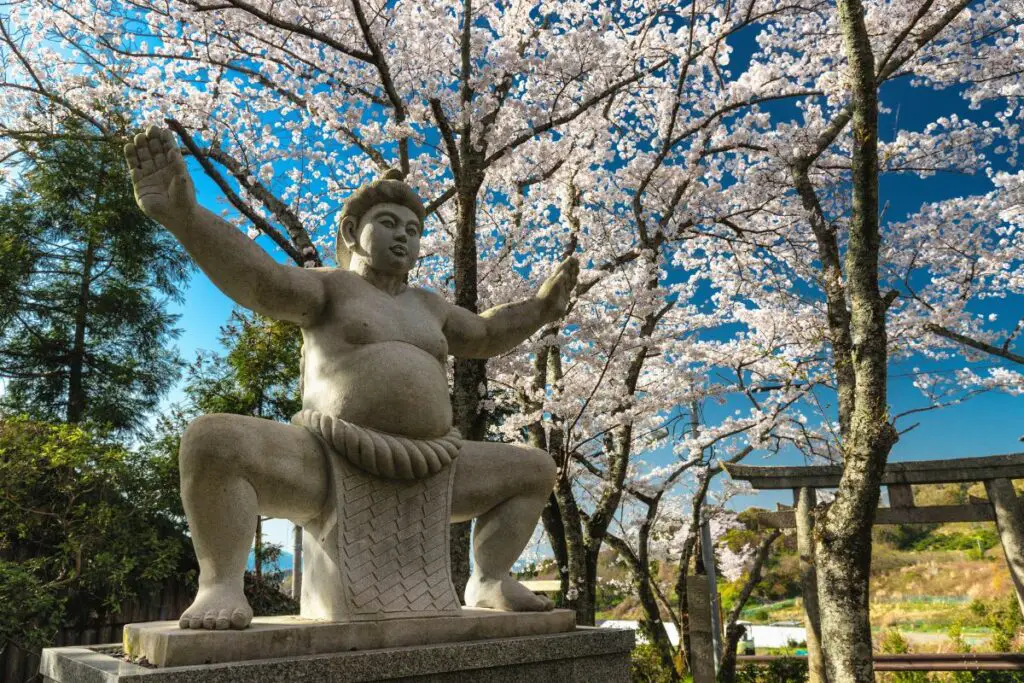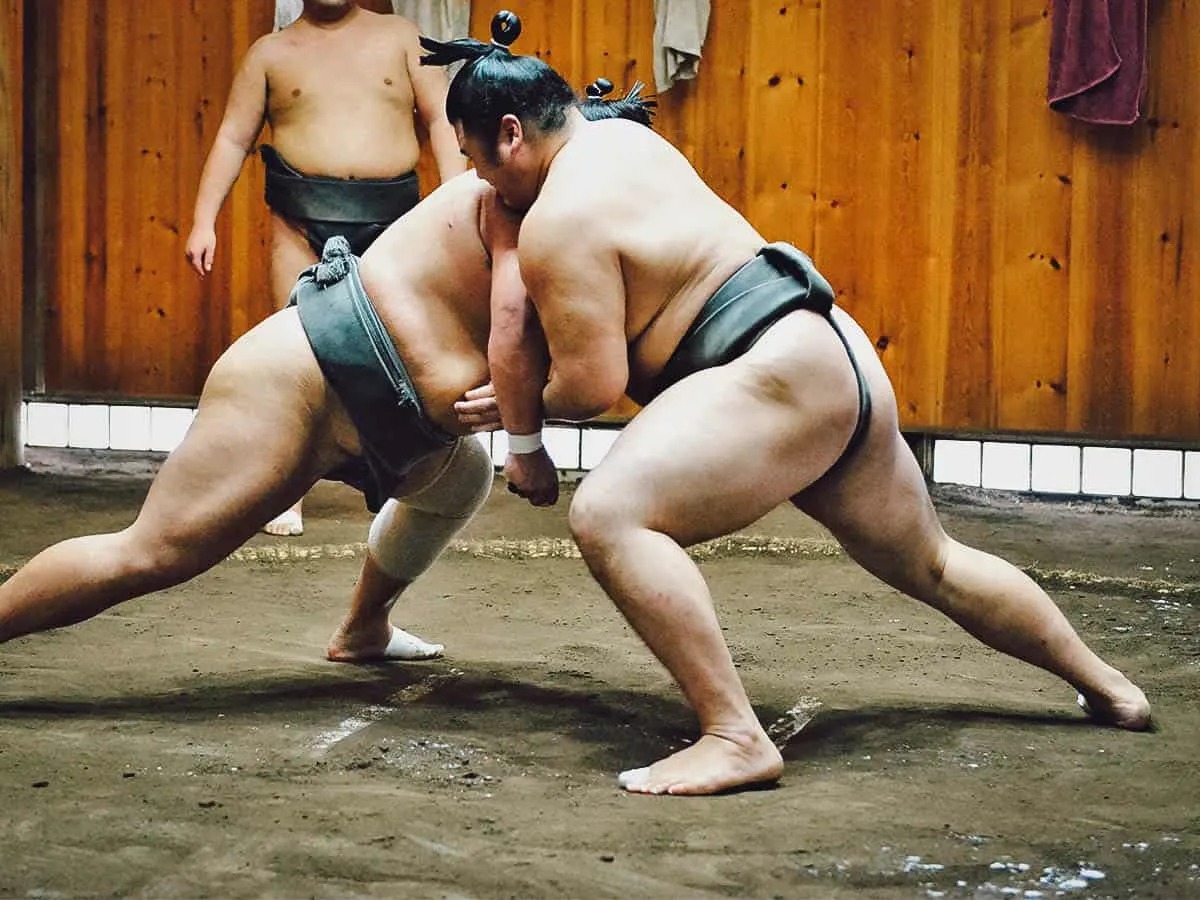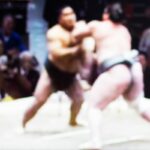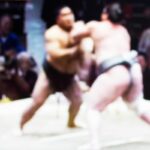Japan is known for its rich culture, bustling cities, and incredible landscapes, all of which are of great importance to the country. However, not many people seem to realize just how important sport is too.

Sport is a hugely important part of Japanese culture. In fact, almost every popular sport from around the world is played there. Some sports were even modified or recreated to produce a whole new Japanese sport.
Some of the most popular sports in Japan include soccer, tennis, golf, baseball, and sumo wrestling.
While this wide range of sports is played by millions of Japanese people every year, only one can take the crown of being the country’s national sport. In this post, we’re going to show you which sport is the national sport of Japan and tell you everything else you should know.
Let’s get started!
So, What Is The National Sport Of Japan?
Let’s get straight to the point by answering the main question you came here looking for the answer to. The national sport of Japan is sumo wrestling. Despite the increasing popularity of other sports right across Japan, sumo wrestling retains its status of being the country’s national sport.
The main reason the sport is held in such high regard is due to its rich history in the country. Seen as a form of entertainment in Japan as far back as 794 AD, the sport has a long history in the country. Today, the sport is still massively popular.
What Is Sumo Wrestling?
Now you know what the national sport of Japan is, let us give you a rundown of what the sport is and what it entails.
Sumo wrestling is a full-contact sport that takes place in a small circular ring known by the name “dohyo”. Inside the ring, two wrestlers, known locally as Rikishi, face off against each other. The aim of the bout is to try and get the other wrestler to leave the ring.
A Rikishi wins when their opponent leaves the ring or touches the ground with any part of their body.
Sumo wrestling is a form of martial art that was actually founded in Japan. It is also the only place in the world where the sport is practiced professionally.
The sport is organized, promoted, and regulated by the JSA (Japan Sumo Association). Every professional wrestler becomes part of “heya”, which is a wrestling organization.
Sumo Wrestling Origins
Sumo wrestling has an interesting backstory that relates strongly to Shinto rituals. At a variety of shrines, there is evidence that suggests the Japanese people took part in ritual dances. In these ritual dances, the Japanese people would wrestle with Shinto divine spirit. This spirit was known as “Kami”.
The ritual became so important that people from provinces all over Japan would attend the dance and compete. This contest was called the “Samai Party”.
Over time, rules were changed, with victory over the opponent becoming more and more important.
It was in the 16th century that the ring was introduced. Only during the Endo period was this wrestling seen as a sport.
Sumo Wrestler Costumes

When the first sumo wrestling competitions took place in the 16th century, sumos wore loose-fitting loincloths. These costumes worked well but it was quickly discovered that the wrestlers could too easily grab their opponent’s clothes, before dragging them to the floor.
As a result, a stiffer type of cloth was made. This cloth was named the “Mawashi”. A type of wrestling belt, the Mawashi is made out of silk. They are usually 30 feet long and 2 feet wide. They also weigh approximately 8 to 11 lbs.
Due to its length, the Mawashi is wrapped around the wrestler six or seven times to form a large knot.
How Much Do Professional Sumo Wrestlers Earn?
We all know just how much professional sportsmen and women earn but how does sumo wrestling compare?
Compared to other sports, sumo wrestlers don’t earn as much. However, that doesn’t mean they don’t still make a nice amount of money for being successful. In dollars, a ranked professional sumo wrestler could expect to earn anywhere from $9,500 to $24,500 a month.
The very best sumo wrestlers that win the Grand Tournament can expect over $88,000 in prize money and thousand-dollar bonuses.
How Many People Watch Sumo Wrestling?
So, just how popular is Japan’s national sport?
Sumo wrestling is still very popular across Japan with a record high of almost 800,000 people watching professional sumo wrestling in 2015. This was up 500,000 from the previous record of just over 300,000.
One thing that boosts the popularity and the number of people that watch sumo wrestling is tourism.
With over 31 million people visiting Japan every year, there are large numbers of people who seek out a local sumo match to watch.
Is Sumo Wrestling The Most Popular Sport In Japan?
Despite being Japan’s national sport, you may or may not be surprised to hear that sumo wrestling isn’t the most popular sport in the country. The sport that is the most popular is quite surprising.
Unlike other countries where football, soccer, or golf is the most popular sport, Japan’s most popular sport is baseball. First introduced to Japan in 1872, baseball has the longest history of professional league in Japan.
This has created a huge audience and led to the sport being played in every school at local, national, and international levels (see also ‘What Time Does School Start in Japan?‘).
The average salary across the league is almost $500,000. This just goes to show how much bigger the sport is. In fact, 47.2% of Japanese people say it’s their favorite sport. Only 27.3% of people prefer sumo wrestling.
Final Thoughts
There you have it, sumo wrestling is the national sport of Japan. This entertaining ancient sport has been held in high regard across Japan for centuries. Despite no longer being the most popular sport in the country, it is still considered to be of significant importance.
Enjoyed by thousands of people every year and a rich source of Japanese culture, sumo wrestling is a Japanese sport that is sure to be around for centuries to follow.
If you’re ever in Japan, why not spare some time to watch some sumo wrestling at a local “dohyo”?








